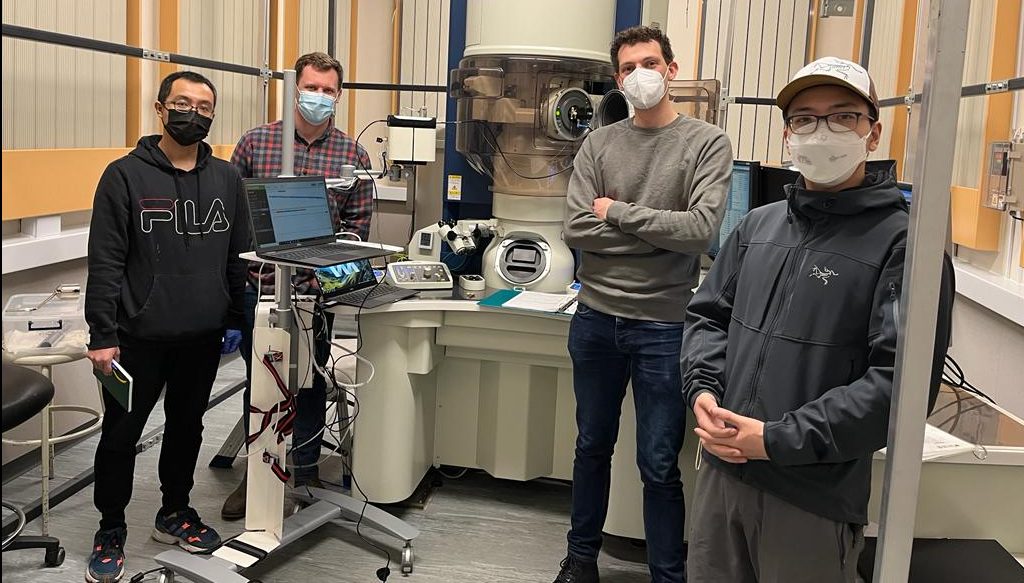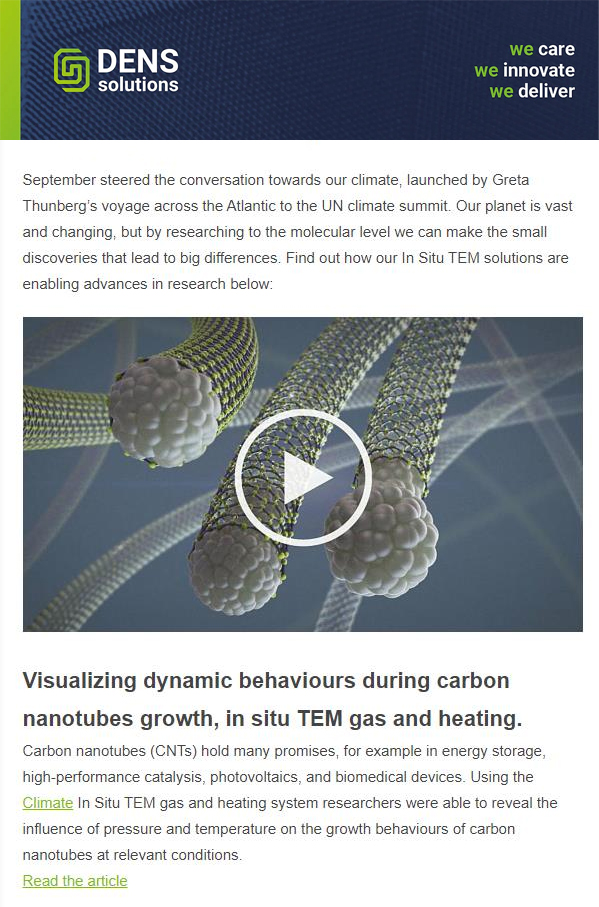
Introducing the Stream Liquid Supply System: An integrated solution offering unmatched flexibility
An interview with DENSsolutions Mechanical Engineer Alejandro Rozene about our latest addition to the Stream product line: the Liquid Supply System (LSS).

DENSsolutions introduces its latest solution: the Stream Liquid Supply System (LSS): an integrated solution designed to offer you ease-of-use, flexibility and reproducibility in your in situ liquid experiments. In this article, we interview our Mechanical Engineer Alejandro Rozene to learn all about the LSS, from what inspired its development, its unique capabilities and the many applications that will benefit from its creation.
What led to the development of the Stream Liquid Supply System?
“Our Liquid Phase Electron Microscopy (LPEM) solutions have been used by researchers around the world in a plethora of research fields, such as protein studies, battery research and molecular self-assembly. With our Stream system, users can fully control the microfluidic environment inside the Nano-Cell, our environmental MEMS sample carrier, while biasing or heating their sample. Considering the wide range of capabilities the system offers and the complexity of LPEM, Stream is quite the advanced system. This is precisely what inspired the next step in the innovation process: the development of an integrated solution designed to offer greater flexibility and ease-of-use. The Liquid Supply System (LSS) is a single scientific instrument that allows microscopists to carry out imaging experiments in fewer steps while introducing new features. The LSS is also designed to be the basic unit of a modular system that can be configured for different research applications.”
What are the main benefits of the LSS for users?
“The introduction of the LSS to the Stream product line brings forth numerous advantages for your in situ liquid experiments, including greater flexibility, reliability and reproducibility. These benefits are detailed below:
1) Ease of use: Thanks to the clever architecture of the LSS, particularly the moveable base, you can easily relocate, store and set it up in various locations. It is also possible to control the microfluidic environment of the Nano-Cell and to apply different stimuli using a single interface in Impulse, our in situ experiment control and automation software. All of the sensor data is collected centrally. The LSS therefore simplifies the LPEM workflow and allows you to shift the focus from the hardware to the imaging experiment. This will potentially open the door to more elaborate experimental workflows.
2) High resolution imaging and meaningful analytical analysis: It is widely known that LPEM suffers from limited resolution caused by the thickness of the liquid layer inside the sample chamber. Even a 500 nm liquid layer can limit imaging resolution. With the LSS, the capability of controllable and inert gas purging is introduced. This means that you can easily displace the liquid in the Nano-Cell and effortlessly cycle between dry and liquid environments. This can be done with air or with an inert gas for air-sensitive samples. Via purging, you can easily get rid of excess liquid in the sample, thereby allowing you to achieve high resolution imaging, image in electron diffraction mode and perform spectroscopy techniques: EDS and EELS.
3) Reliable and reproducible results: The components of the LSS, such as the inlet and outlet pressure-based pumps as well as the liquid flow meter, introduce an unprecedented level of control during your liquid phase microscopy experiments. The LSS offers the unique ability to actively measure the liquid flow, making it possible for you to compare results from different experiments. Moreover, this means that you can easily detect potential clogs in the system and act fast, allowing you to spend your TEM time efficiently and effectively. Ultimately, the combination of our LSS and unique Nano-Cell design, having an on-chip inlet and outlet, enables the liquid delivery to be both reliable and reproducible with a success rate of more than 95%.”
Which applications will benefit most from the LSS?
“The LSS is beneficial for any researcher who wants to use LPEM to observe hydrated samples, matter suspended in liquid or liquid itself in a dynamic environment. Some of the many fields that will benefit from the system include:
- Life Science: DNA imaging, biomineralization, cell imaging and protein studies
- Electrochemistry: studies of aqueous electrolytes and electrocatalysis
- Material Science: studies of nanoparticle formation, self-assembly and growth
These are just a few examples of the several fields that can benefit from the Stream system. Furthermore, the door is open to any researcher who may want to exploit the unique capabilities of the LSS for any liquid-based study outside of the TEM.”
What kind of challenges were tackled during development?
“The LSS is a state-of-the-art scientific instrument. As with any other mechatronic development, integrating the sensing, actuating and microfluidic components into a single, robust machine was in itself a challenge. Also, our market is especially demanding since the users of this instrument already work with some of the most advanced equipment out there, which undoubtedly sets the bar very high. However, it was a very enjoyable experience thanks to the incredible teamwork and collaboration of our MEMS Project Manager, Tijn van Omme, and our Software Developer, Emil Svensson, as well as our manufacturing partners.”
What is the compatibility of the LSS?
“The LSS is an integral part of our Stream product line. It is therefore fully compatible with the modular Stream sample holder, the Stream liquid biasing and liquid heating Nano-Cells, as well as with Impulse. With regards to the microscopes, compatibility is given by the holder type. We currently offer compatibility with JEOL and Thermo Fisher Scientific microscopes.”
Has the LSS already been installed?
“Yes, the Liquid Supply System has been installed at the University of Alberta Nanofabrication and Characterization Facility (nanoFAB) in Canada. The nanoFAB is a national, open-access training, service, and collaboration centre, focused on academic and industrial applications in micro- and nanoscale fabrication and characterization. The installation was carried out by our MEMS Project Manager, Tijn van Omme, with the support of our close distributor Colt Murray from Nanoscience Instruments. It is the first of several installations planned in the upcoming months.”

From left to right: XueHai Tan, Colt Murray, Tijn van Omme and Haoyang Yu
Read more about the LSS:
Receive a quotation for Stream:

